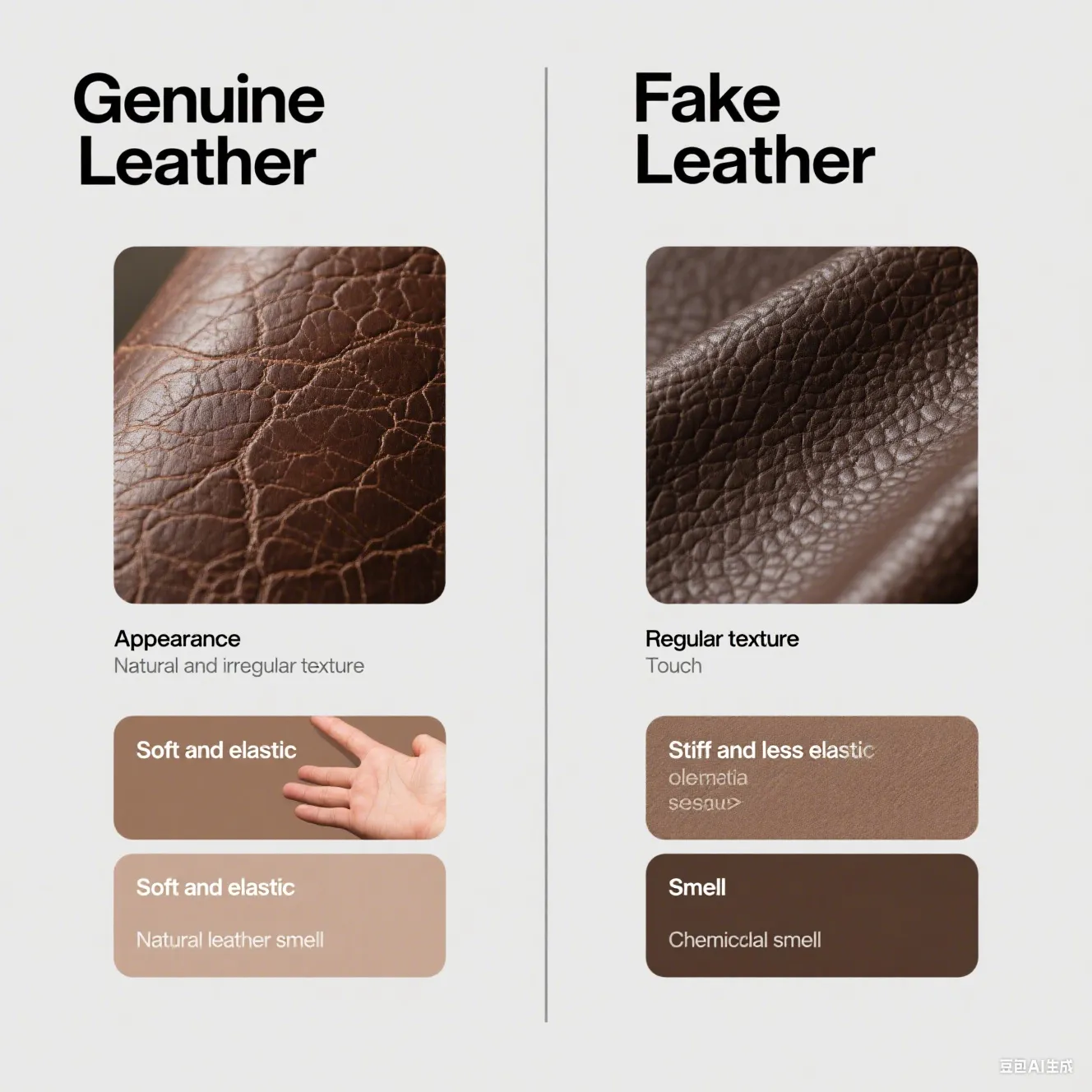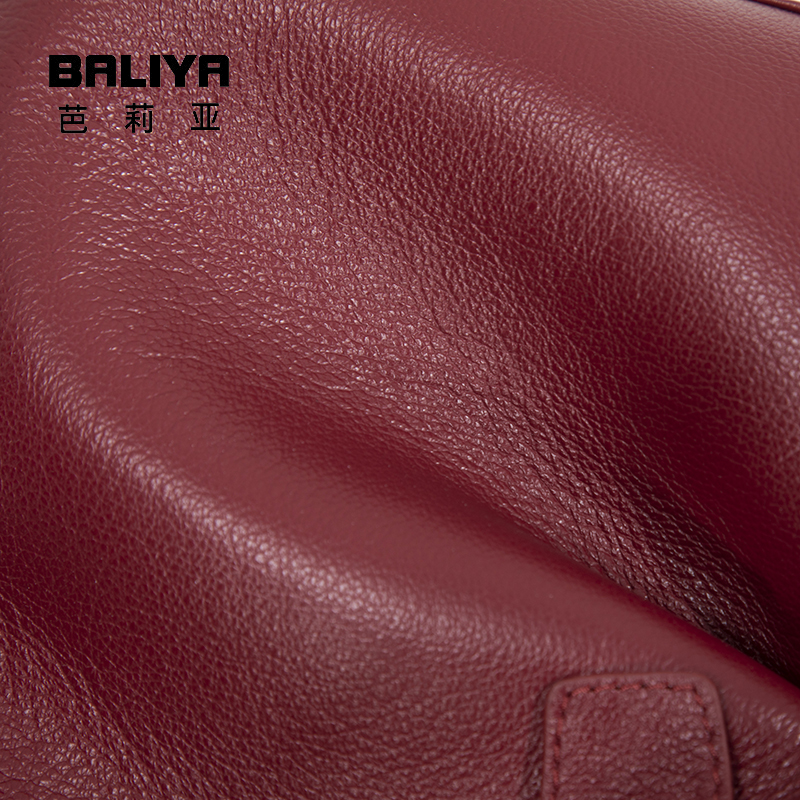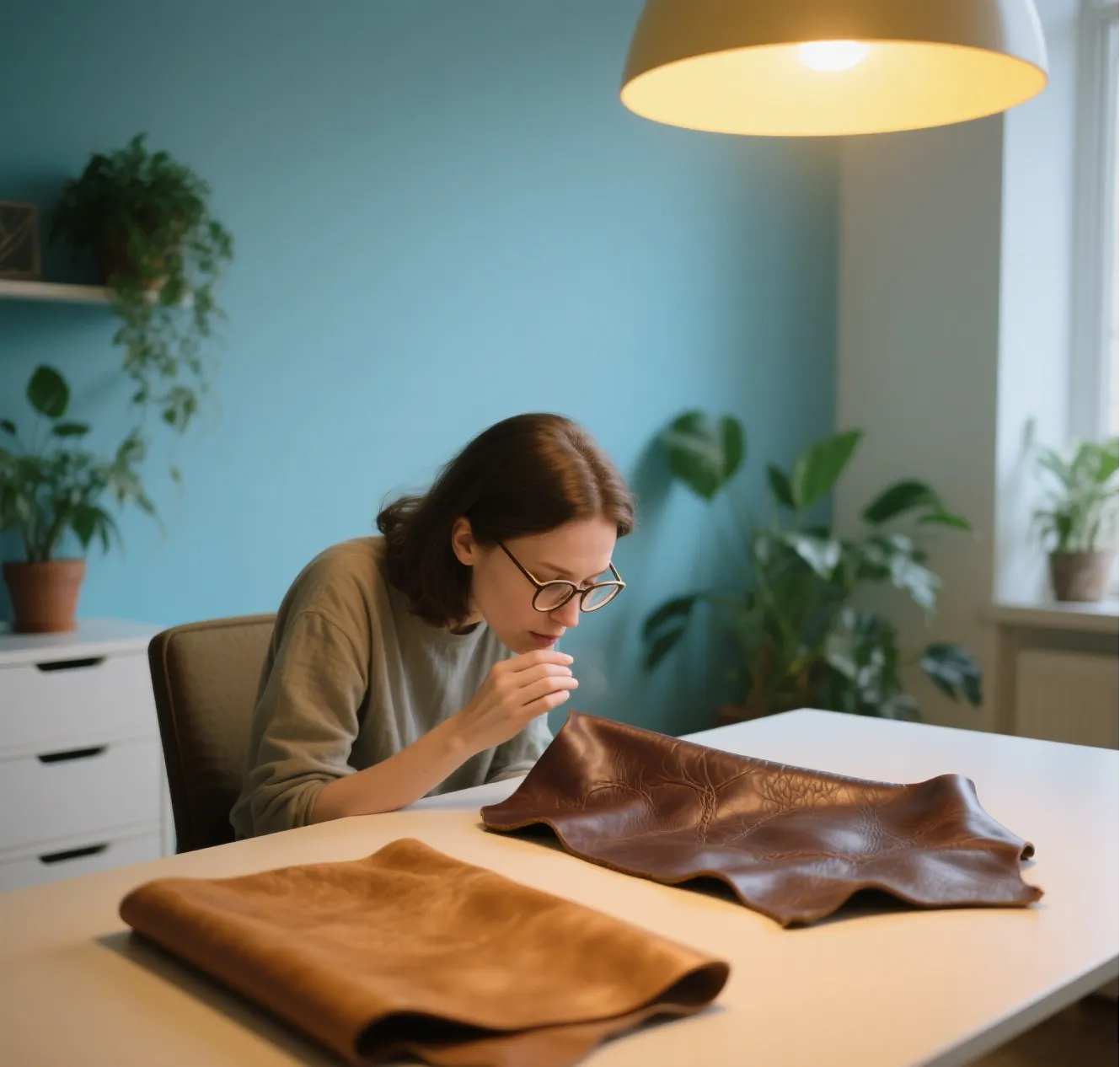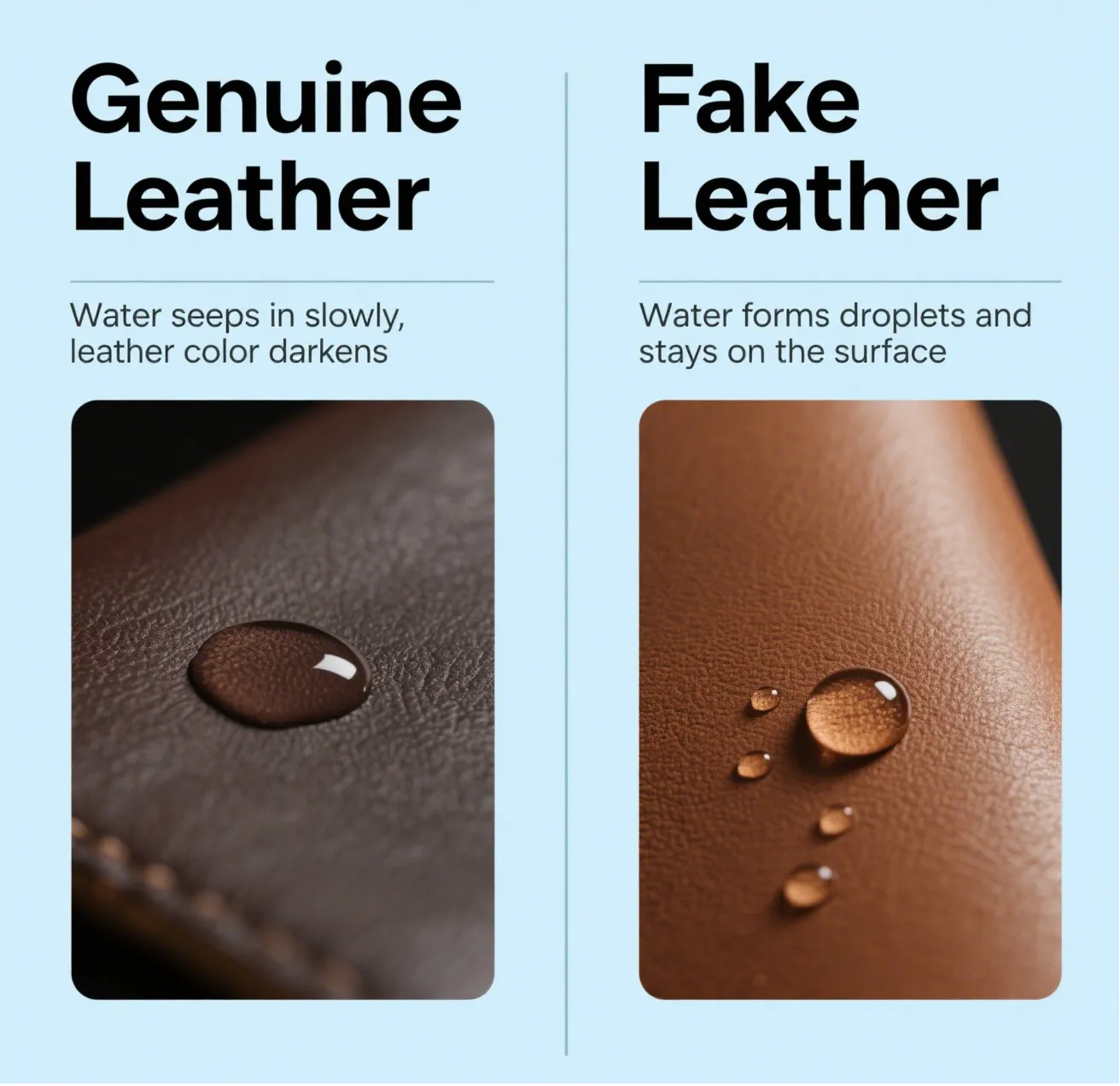When shopping for leather goods, knowing how to spot fake leather can save you from costly mistakes. Genuine leather offers durability and elegance, while imitations often lack quality. This guide will teach you how to spot fake leather while helping you identify authentic products through texture, smell, and other key indicators.

The surface of leather can reveal a lot about its authenticity. When trying to figure out how to spot fake leather, start by looking closely at the patterns on the material. Genuine leather, which comes from animal hides, has a unique and irregular pattern. You’ll notice variations in the grain, small pores, and slight imperfections that are natural and can’t be replicated perfectly. These imperfections are a sign of authenticity because each animal hide is one-of-a-kind.
We mentioned this topic:how to identify real leather in the previous article. Friends who are interested can take a look.A key aspect of how to identify real leather is checking for uniformity. Fake leather, often made from materials like polyurethane (PU) or polyvinyl chloride (PVC), is mass-produced, so its patterns tend to be very uniform. The pores, if present, will look identical and repeated, lacking the natural randomness of real leather. If you see a perfectly consistent pattern across the entire surface, it’s likely a fake.
When comparing genuine vs faux leather, natural blemishes are a telltale sign of the real thing. Genuine leather may have scars, wrinkles, or marks from the animal’s life, such as insect bites or scratches. These blemishes add character and prove that the leather is authentic. Faux leather, on the other hand, is designed to be flawless, so any such natural marks are absent.

The texture of leather is another important clue when it comes to how to spot fake leather. Genuine leather has a distinct feel that’s hard to imitate. It’s soft yet sturdy, and when you run your fingers over it, you’ll notice a slight give and a warm sensation. The texture can vary depending on the type of leather, but it’s always natural and not overly smooth.
To understand how to identify real leather through texture, pay attention to smoothness and roughness. Real leather is rarely perfectly smooth. It has a slight grainy texture that you can feel, which is a result of the natural fibers in the hide. Fake leather,especially lower-quality versions, often feels unnaturally smooth and plastic-like. It might also have a slippery texture, unlike the more matte feel of genuine leather.
In the debate of genuine vs faux leather, flexibility is a notable difference. Genuine leather is flexible and can be bent or folded without losing its shape or cracking easily. When you bend a piece of real leather, it will crease slightly, but the creases will smooth out over time. Faux leather, however, is less flexible. It might crack or develop permanent creases when folded, especially if it’s of poor quality. This lack of flexibility is a strong indicator of a fake.

The smell of leather is a powerful indicator of its authenticity, and it’s a useful method in how to spot fake leather. Genuine leather has a rich, earthy smell that’s often described as warm and natural. This scent comes from the tanning process and the natural oils in the hide. It’s a smell that’s hard to replicate with synthetic materials.
Part of how to identify real leather is being able to detect chemical odors. Fake leather is made from synthetic materials, which often have a strong chemical or plastic smell. This odor can be quite harsh, especially when the product is new. It might smell like vinyl or glue, which is a clear sign that it’s not genuine leather. Genuine leather, on the other hand, has no such chemical undertones.
When looking at genuine vs faux leather, their scent profiles are distinct. The natural smell of genuine leather tends to mellow over time but never completely disappears. It becomes a more subtle, pleasant aroma. Faux leather, however, may lose its strong chemical smell a bit, but it won’t develop the same warm, natural scent as real leather. This difference in how the scent evolves can help you tell them apart.

The edges and seams of a leather product can provide valuable clues in how to spot fake leather. Genuine leather has edges that are often rough or have a natural, uneven appearance. When cut, the edge of real leather shows a fibrous texture, which is a result of the natural fibers in the hide. The seams are usually well-stitched, with the thread blending in naturally with the leather.
A tip for how to identify real leather is to check for perfect edges. Fake leather is often cut with precision, resulting in very smooth and even edges. These edges might look like they’ve been sealed or have a plastic coating, which gives them an artificial appearance. The seams on fake leather products might also be less secure, with threads that are more visible or prone to fraying.
In the comparison of genuine vs faux leather, stitching quality matters. Genuine leather products are typically made with high-quality stitching that’s designed to last. The stitches are evenly spaced and tight, ensuring that the leather pieces are held together securely. Faux leather products may have inconsistent stitching, with some stitches being loose or uneven. This is because manufacturers of fake leather often cut corners on production to keep costs low.
A simple water test can be helpful in how to spot fake leather. Genuine leather is porous, so when you place a small drop of water on it, the water will be absorbed slowly. You’ll notice a dark spot where the water was applied, and this spot will fade as the water dries. This porosity is a characteristic of real leather that synthetic materials don’t have.
To further understand how to identify real leather, observe how water reacts. Fake leather is not porous, so water will sit on the surface and not be absorbed. It might bead up or roll off, leaving no mark on the material. This is because faux leather is made from non-porous synthetic materials that don’t allow water to penetrate.
When considering genuine vs faux leather, drying time after a water test is different. As mentioned, genuine leather absorbs water, so the spot left by the water will take some time to dry completely. Fake leather, since it doesn’t absorb water, will have the water dry quickly from the surface, often leaving no trace. This difference in drying time is a reliable way to distinguish between the two.
Brands that sell genuine leather products often provide labels and certifications that can help you in how to spot fake leather. These labels might indicate the type of leather (such as full-grain, top-grain, or genuine leather) and provide information about the sourcing and tanning process. Certifications from reputable organizations can also give you confidence that the product is authentic.
As part of how to identify real leather, verifying label information is important. Fake leather products might have misleading labels, using terms like “leather-like” or “man-made leather” in small print, while prominently displaying words that suggest authenticity. Be sure to read labels carefully and look for specific information about the leather type and origin. If the label is vague or doesn’t provide details, it’s a red flag.
In the world of genuine vs faux leather, a brand’s reputation is significant. Established brands with a reputation for quality are more likely to sell genuine leather products. Do some research on the brand before making a purchase. Read reviews from other customers and check if the brand has a history of selling authentic leather goods. Brands that are known for using fake leather will often have negative reviews pointing out this issue.
Mastering how to spot fake leather ensures you invest in high-quality, long-lasting products. By combining visual inspections, touch tests, scent analysis, and brand verification, you can confidently identify real leather and avoid overpriced imitations. Whether comparing genuine vs faux leather, these expert techniques will help you make informed decisions and enjoy the true luxury of authentic leather.